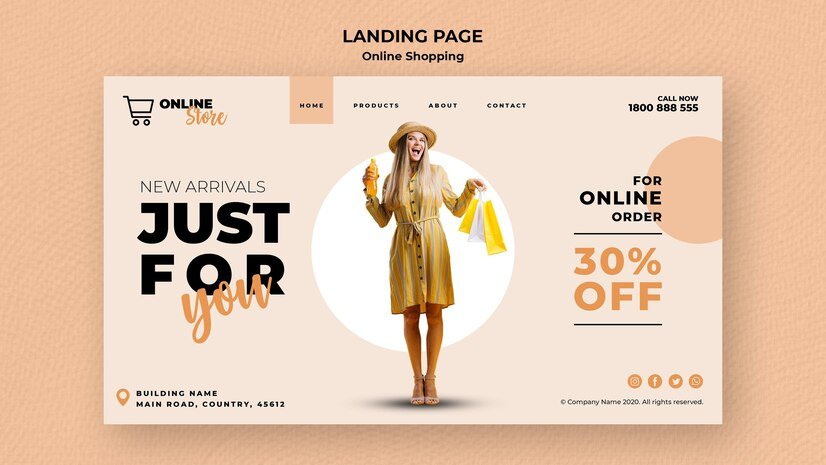Shopify store design trends and best practices
In today’s digital marketplace, the design of your Shopify store can make or break your business. From attracting visitors to converting them into loyal customers, every aspect of your store’s design plays a crucial role. Here, we explore the latest trends and best practices that can elevate your Shopify store’s design to new heights.
Introduction to Shopify Store Design
In today’s digital marketplace, the design of your Shopify store can make or break your business. From attracting visitors to converting them into loyal customers, every aspect of your store’s design plays a crucial role. Here, we explore the latest trends and best practices that can elevate your Shopify store’s design to new heights.
Key Elements of Shopify Store Design
Responsive Design
In an era dominated by mobile devices, having a responsive Shopify store is non-negotiable.Your store will appear and work flawlessly across a range of screen sizes, from computers to smartphones, thanks to responsive design. Tools like Shopify’s responsive themes and CSS frameworks make achieving this easier than ever.
Visual Appeal
The visual elements of your Shopify store—from the theme you choose to the quality of product images—play a significant role in attracting and retaining customers. A visually cohesive store enhances brand identity and trustworthiness. Investing in high-resolution images, consistent branding, and clean design can differentiate your store from competitors.
Navigation
Navigating your Shopify store should be intuitive for visitors. Clear, concise menus and logical navigation paths help users find what they need effortlessly. Avoid cluttering menus with too many options; instead, prioritize ease of use and accessibility across all devices.
Shopify Store Design Trends
Minimalist Design
Minimalism continues to dominate Shopify store design trends for its clean aesthetics and focus on essential elements. By reducing clutter and unnecessary distractions, minimalist designs enhance user focus on products and key messages. This approach not only improves UX but also aligns with contemporary design sensibilities.
Dark Mode
The popularity of dark mode has soared across digital platforms, including ecommerce websites. Shopify store owners are adopting dark mode not only for its sleek appearance but also for its potential to reduce eye strain and conserve device battery life. Implementing a toggle switch for light and dark themes can cater to diverse user preferences.
Custom Typography
Typography is a powerful branding tool that influences how customers perceive your store. Custom fonts can convey brand personality and improve readability. Shopify allows for easy integration of custom fonts through its theme customization options, enabling store owners to align typography with their brand identity seamlessly.
Optimizing UX/UI in Shopify Stores
User Experience (UX)
A positive UX is fundamental to the success of any Shopify store. Seamless navigation, fast loading times, and intuitive design contribute to lower bounce rates and higher conversion rates. Continuously monitor user feedback and behavior to refine and improve the UX over time.
User Interface (UI)
Effective UI design guides users through the purchasing journey with clear, prominent CTAs and streamlined checkout processes. Consistent branding and visual hierarchy ensure that important elements stand out, making it easier for customers to make informed buying decisions.
SEO Best Practices for Shopify Stores
Keyword Optimization
Integrating your focus keyword—“Shopify store design trends and best practices”—naturally throughout your store’s content and metadata improves visibility on search engine results pages (SERPs). Use tools like Google Keyword Planner or Ahrefs to identify relevant keywords and optimize your product descriptions, blog posts, and meta tags accordingly.
Site Speed and Performance
Site speed not only impacts user experience but also SEO rankings. Reduce the number of HTTP queries, use browser caching, and compress pictures to speed up loading times. Shopify’s performance dashboard provides insights and suggestions for optimizing your store’s speed and performance.
Creating Trust and Credibility
Customer Reviews and Testimonials
Displaying customer reviews and testimonials prominently on your Shopify store builds credibility and trust. Encourage satisfied customers to leave reviews and respond promptly to feedback—positive or negative—to demonstrate your commitment to customer satisfaction.
Security and Payment Options
Ensure your Shopify store uses SSL encryption to protect customer data during transactions. Offering multiple secure payment options, such as credit cards, PayPal, and Apple Pay, reassures customers and reduces cart abandonment rates.
Future-proofing Your Shopify Store
Emerging Technologies
Stay ahead of the curve by integrating emerging technologies like AI and machine learning into your Shopify store. Chatbots for customer support, personalized product recommendations, and AI-powered analytics can enhance user experience and drive sales.
Sustainability and Ethical Design
Demand for items sourced ethically and sustainably is rising along with customer awareness. Incorporate eco-friendly practices into your Shopify store design, such as minimal packaging, carbon-neutral shipping options, and partnerships with ethical suppliers.
Conclusion :
Designing a successful Shopify store requires a strategic blend of aesthetics, usability, and SEO optimization. By staying informed about current design trends, prioritizing user experience, and embracing technological advancements, you can create a Shopify store that not only attracts visitors but also converts them into loyal customers.
FAQs About Shopify Store Design Trends and Best Practices
What are the essential elements of a well-designed Shopify store?
A well-designed Shopify store includes responsive design, visually appealing graphics, intuitive navigation, and a seamless user experience.
How can I improve the SEO of my Shopify store?
Optimize your Shopify store for SEO by integrating relevant keywords, improving site speed, and ensuring mobile responsiveness.
Why is minimalism popular in Shopify store design?
Minimalist design reduces clutter, enhances focus on products, and aligns with modern design aesthetics, improving user experience.
What role does typography play in Shopify store design?
Typography influences brand perception and readability. Custom fonts can strengthen brand identity and improve user engagement.
How can I build trust with customers on my Shopify store?
Build trust by displaying customer reviews, ensuring secure transactions, and offering transparent policies on your Shopify store.


